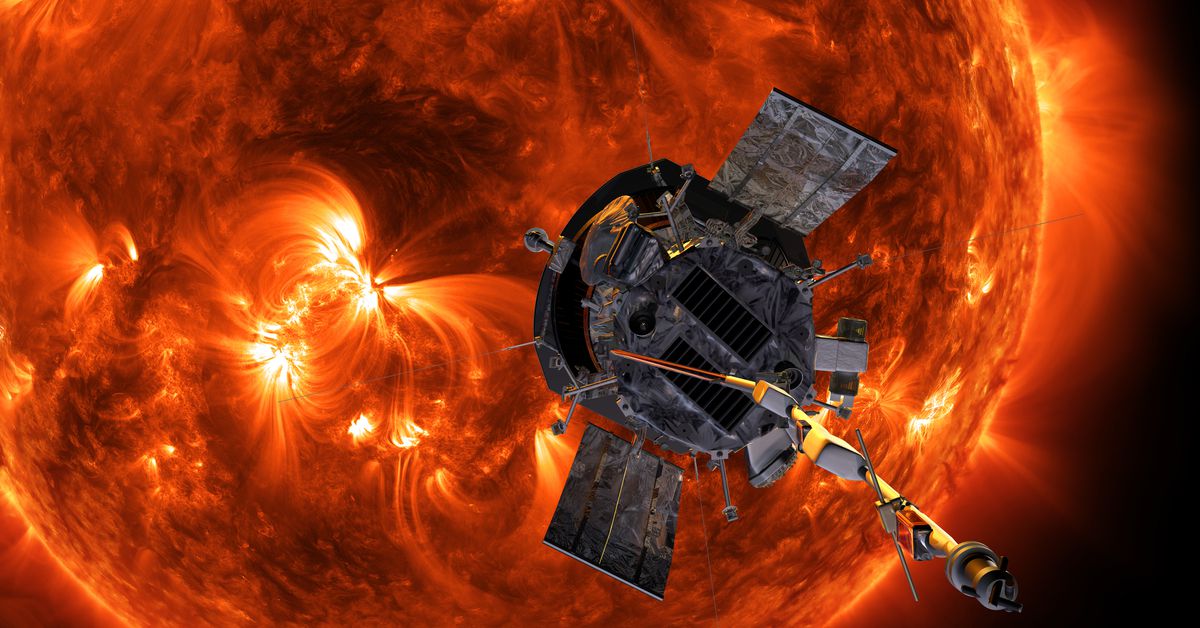In a groundbreaking achievement, NASA’s Parker Solar Probe has successfully completed its closest approach to the Sun, withstanding temperatures of up to 2,500 degrees Fahrenheit. Launched in 2018, the probe was designed to study the corona, the Sun’s outer atmosphere, and its incredibly high temperature.
A Brief History of the Mission
The Parker Solar Probe was first launched by NASA and Johns Hopkins Applied Physics Laboratory on August 12, 2018, from Cape Canaveral Air Force Station in Florida. The probe is named after Eugene Parker, a renowned astrophysicist who first proposed the existence of solar winds in the 1950s.
Closest Approach to the Sun
On December 24th, the Parker Solar Probe flew an astonishing 3.8 million miles from the surface of the Sun, marking the closest approach ever made by a human-made object. The probe reached speeds of up to 430,000 miles per hour during its flyby, generating intense heat and radiation that would be catastrophic for most spacecraft.
Preliminary Findings
Although the mission is still in its early stages, initial data suggests that the Parker Solar Probe has survived the close encounter with minimal damage. NASA officials confirmed on December 26th that the probe transmitted a signal back to Earth, indicating it’s operating normally and in good health.
What Did We Learn?
The close flyby will provide scientists with invaluable insights into several key areas:
- Solar Wind: By studying the Parker Solar Probe’s interactions with the solar wind, researchers can gain a better understanding of how charged particles are accelerated to near light speeds.
- Solar Heat: The probe’s instruments will measure the Sun’s heat and radiation patterns, helping scientists to comprehend the mechanisms behind the corona’s incredibly high temperatures.
- Energetic Particles: By examining the acceleration of energetic particles in the vicinity of the Sun, researchers can shed light on the fundamental processes governing solar physics.
The Parker Solar Probe’s Instrumentation
To withstand the extreme conditions near the Sun, the Parker Solar Probe is equipped with cutting-edge instrumentation. These include:
- Thermal Protection System: A 4.5-inch-thick heat shield that protects the probe from temperatures reaching up to 2,500 degrees Fahrenheit.
- Solar Array: A specialized solar array that provides power for the probe’s instruments during its close approach to the Sun.
Future Plans
Now that NASA has confirmed the success of the mission, scientists expect the Parker Solar Probe to send detailed telemetry data on January 1st. This will provide further insights into the corona’s behavior and help researchers refine their understanding of solar physics.
Conclusion
The Parker Solar Probe’s historic flyby marks a significant milestone in space exploration, demonstrating humanity’s ingenuity and determination to push beyond the boundaries of scientific knowledge. As scientists continue to analyze the data collected during this mission, we can expect groundbreaking discoveries that will reshape our understanding of the Sun and its surroundings.
Frequently Asked Questions
Q: What is the Parker Solar Probe?
A: The Parker Solar Probe is a NASA spacecraft designed to study the corona, the Sun’s outer atmosphere, and its incredibly high temperature.
Q: What was the closest approach made by the Parker Solar Probe to the Sun?
A: On December 24th, the Parker Solar Probe flew an astonishing 3.8 million miles from the surface of the Sun, marking the closest approach ever made by a human-made object.
Q: What can we expect from the mission’s findings?
A: The close flyby will provide scientists with invaluable insights into solar wind, solar heat, and energetic particles accelerated to near light speeds.
